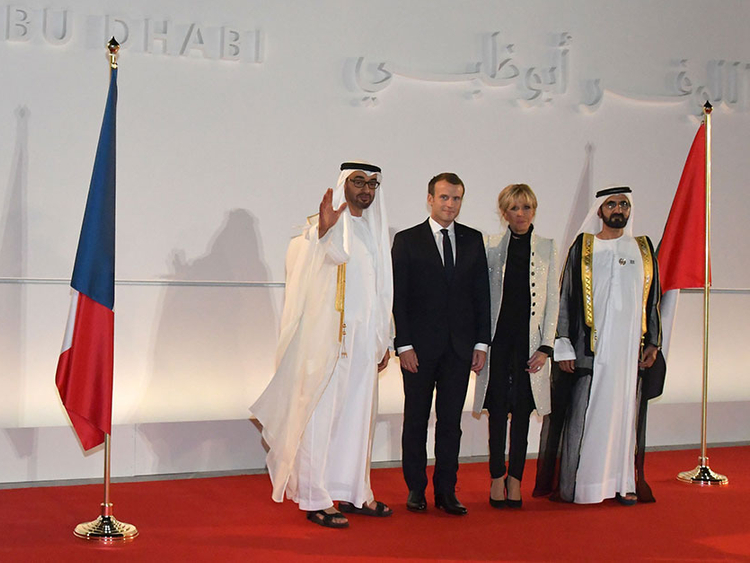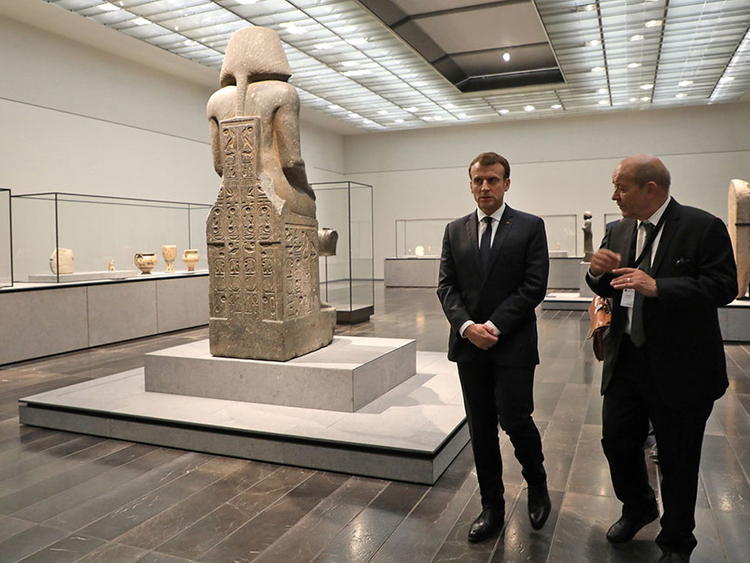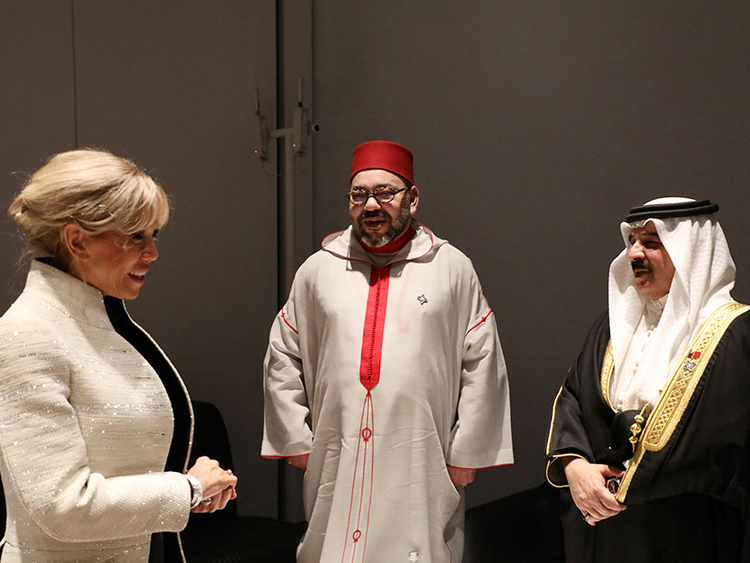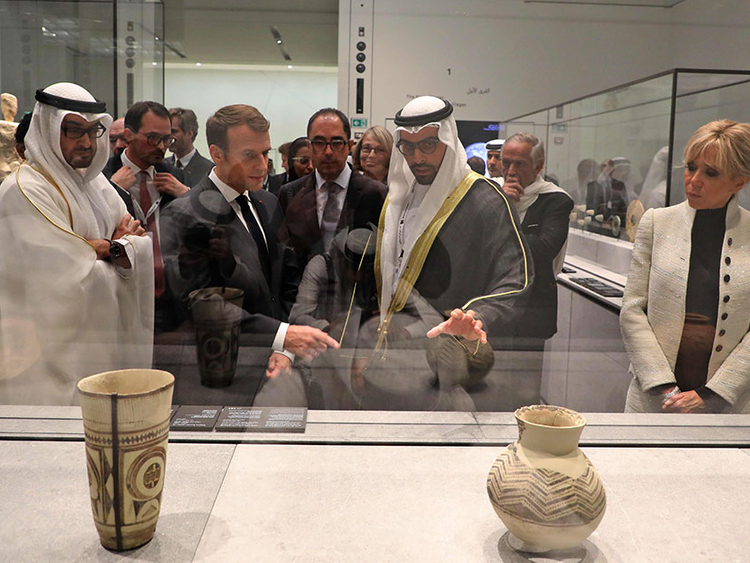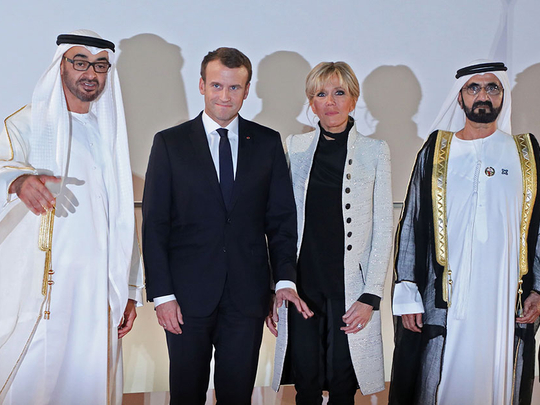
Abu Dhabi: The Louvre Abu Dhabi was inaugurated on Wednesday by dignitaries from the UAE and France, with both sides hailing the museum as a monument to the global confluence of cultures “that will broadcast tolerance and acceptance”.
In his inaugural speech, His Highness Shaikh Mohammad Bin Rashid Al Maktoum, Vice-President and Prime Minister of the UAE and Ruler of Dubai, called for an alliance of civilisations to face the enemies of humanity and ensure the convergence of minds and cultural exchange. He described the Louvre Abu Dhabi as a monument representing the beauty of the East and the West.
Today we inaugurated the Louvre Abu Dhabi with pride. This key cultural and architectural monument is a celebration for all Arabs, bridging East and West and introducing Abu Dhabi as a bright new global cultural hub. pic.twitter.com/XZ89SeSk4d
— HH Sheikh Mohammed (@HHShkMohd) November 8, 2017
“The Louvre Abu Dhabi will be a meeting point for lovers of art, culture and beauty all around the world. With the opening of this museum, Abu Dhabi has become the capital of art, architecture and mankind’s heritage,” he said.
Mohammed bin Rashid, Mohamed bin Zayed, kings & heads of states witness inauguration of Louvre Abu Dhabi, a historic new cultural monument pic.twitter.com/CbtxqusdC3
— محمد بن زايد (@MohamedBinZayed) November 8, 2017
Shaikh Mohammad officially inaugurated the iconic museum along with His Highness Shaikh Mohammad Bin Zayed Al Nahyan, Abu Dhabi Crown Prince and Deputy Supreme Commander of the UAE Armed Forces, and French President Emmanuel Macron.
Macron hailed the museum as a “decisive turning point” in ties with the UAE.
Shaikh Mohammad Bin Rashid added that the museum was a bridge linking the East and the West, while becoming a unique monument that Abu Dhabi has added to humankind’s heritage.
The inauguration of the iconic museum was attended by King Mohammad VI of Morocco, Bahrain’s King Hamad Bin Eisa Al Khalifa, Mohammad Ashraf Ghani, President of Afghanistan, and a number of representatives from brotherly and friendly countries.
Collective genius
Macron, who was accompanied by his wife Brigitte as he walked through the museum’s opening gallery, also delivered an impassioned speech to the enraptured audience gathered under the metallic dome of the museum.
Ahead of the inauguration, Mohammad Bin Zayed took to Twitter, tweeting, “Today, a global cultural monument is launched: Louvre Abu Dhabi brings together unique art icons that reflect humanity’s collective genius.”
The museum, which opens its doors to the public on Saturday, November 11, is a product of a 2007 agreement between the UAE and French governments.
The deal lends the name of the renowned Louvre Museum for 30 years and six months, along with temporary exhibitions for 15 years, and artworks from 13 leading French institutions for a decade.
Yet, Jean-Luc Martinez, president-director of the Louvre Museum in Paris, stressed during a press conference on November 7 that the Louvre Abu Dhabi is an Emirati museum.
“This is an Emirati project, in keeping with the UAE leaders’ vision of a knowledge movement in the 21st century, and France shares its knowledge,” he said.
At present, more than 50 per cent of the professionals — such as curators, educators and support service staff — at the museum are Emirati, according to Hessa Al Daheri, deputy director of the Louvre Abu Dhabi.
“And if we have done our job well, visitors will come to the Louvre Abu Dhabi with questions, and look to find their own answers,” Al Daheri said.
Till date, the Louvre Abu Dhabi has acquired 620 pieces as part of its permanent collection, including an ancient Bactrian princess from the beginning of the second millennium BC, a leaf from the Blue Quran dating back to about 900AD, and French artist Paul Gauguin’s 1888 piece, ‘Children Wrestling’. These are housed in a series of 55 white buildings topped by an iconic metallic dome, along with 300 loaned items from French and regional museums.
Among these loans is Italian master Leonardo da Vinci’s portrait of a woman, La Belle Ferronniere, a massive Italian globe dating back to the 17th century, and a bronze Apollo Belvedere statue created for French nobility.
It is the distinctive arrangement of pieces and displays in the Louvre Abu Dhabi that truly sets the museum apart.
Jean-Francois Charnier, scientific director at Agence France-Museums, an organisation created to carry out the commitment of France towards the Louvre Abu Dhabi, said the organisation follows a chronological trail, and in a manner that shows the shared human experience across civilisations.
“For reasons that are not always apparent, humanity had periods of evolution that reverberated across cultures, and we want to show this interconnection in the museum’s narrative. We wanted the [displays] to also be meaningful to this culture, and … create a dialogue [between the items],” he told Gulf News earlier.
Charnier added that the aim is also to allow visitors to participate in the narrative, through information boards that pose questions, interactive displays and unique groupings.
“We tried to hit the right balance between enabling visitors to be ambassadors of their own cultures and participants in the Louvre Abu Dhabi’s narrative and story of humankind,” he said.


